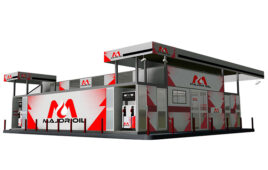By Brett Wilshe, Contributing Editor
When Apple released iTunes in 2001, music retailers began to question their futures. The music industry, once an invincible force in the global market, suddenly seemed vulnerable. But a much larger question loomed: Would it stop with music?
We live in an age where corporeal media is vanishing. Newspapers are streamed to smartphones, movies are streamed through Netflix and video-games are commonly downloaded from online distribution platforms. The process often cuts out the middle man and for retailers, the hamstrung economy is only rubbing salt in their wounds. But to Michael Jester, the category manager for gaming and electronics at 7-Eleven Inc., these trends represent an opportunity for new sales.
“Is downloadable content affecting retailers? Absolutely. But is it the death knell for retailers? Absolutely not,” Jester said.
the Gaming Bandwagon
The Dallas-based convenience chain has just gotten its foot in the door selling software. Marketing partnerships with Microsoft and Electronic Arts (EA) led to a promotional sale of games from the popular Halo and Madden football. Following the success of these partnerships, the company realized it was onto something. Soon after, it expanded into prepaid gift cards for another growing gaming phenomenon—Massively Multi-player Online Games (MMOGs). The video game industry is now a $12-billion growing business.
According to Jester, an ad index ratio for customers over 100 is good. A market analysis concluded 7-Eleven’s customers weighed in with an ad index ratio of 369. In his words, “that’s obnoxiously good.” It means the chain’s customers share a key demographic with videogame publishers—the 18-35 male. It also means, 7-Eleven’s customers are gamers—with a predilection for Slurpee drinks and snacks.
With more than 6,800 stores in the U.S. and Canada alone, 7-Eleven enjoys a certain ubiquity in terms of market penetration. Leading videogame retailer GameStop has 6,200 worldwide by comparison. It may seem they’re late to the show, but they’re striking when the iron is hot.
“The gaming market has typically been very cyclical,” Jester said. “It would crest with the release of every new gaming console, then slow again. The current generation of gaming consoles came out in different release windows. The staggered release really accelerated the market.”
Then, in 2006, Nintendo released the Wii, an accessible system designed to capture a wider audience. It has sold nearly 60 million units worldwide to date and blew the market wide open. Video games, a niche market since inception, suddenly erupted into a juggernaut of sales potential.
“The Wii controller is intuitive and simple. Now you have people in retirement homes playing sports games like tennis. The controllers for Xbox 360 and Playstation 3 are more intimidating for new players,” Jester said.
There has been an exponential rise in the market, thanks to the casual gaming scene Nintendo built. In November, popular videogame Call of Duty: Modern Warfare 2 launched to critical success, and, again, 7-Eleven benefited.
Proceeding Slowly
Still, jumping into a new market is full of calculated risks that could lead to serious missteps. Jester’s optimism goes against the grain of the gaming industry’s climate. It is an age of uncertainty for retail, and forecasters have not been kind. So what makes Jester so confident?
“Let’s be realistic. More than 10 years of readily available online music hasn’t killed CDs as a format. More than five years of accessible streamed movies hasn’t killed DVDs. Blu-Ray is now on a steep rise. Physical media will always exist in some form or another.” Jester said.
A world without hardcopies is difficult to imagine. People like to touch things, if only for the feeling of ownership it creates.
“It is possible to function in society without physical media, but we probably won’t have to anytime soon,” Jester said.
For now, Jester prefers to temper his expectations for software and prepaid gaming card sales. “We approach this part of our business from a near term viewpoint, short term up to five years ahead, and long term of 10 years or more,” he said.
Thankfully, the market for software is still strong. The company is currently testing the purchase and reselling of used software in lieu of GameStop’s runaway success.
“Why trade in your games for GameStop credit when you can only spend it on more games? At 7-Eleven, you can use that credit on food, beer, cigarettes, a Slurpee or energy drinks,” Jester said. He envisions a scenario where gamers come to 7-Eleven for the midnight launch of the newest Madden football game. Trading in last year’s version, the store credit is used to buy munchies for the night of virtual gridiron.
The chain already offers incentives for customers to come to them for gaming. Preordering certain games through 7-Eleven nets the gamer rewards, including collectible cups and code-activated in-game items. The chain also carries prepaid gamer cards with codes that give users credit towards the purchase and download of media.
“If you don’t have access to a credit card, prepaid gamer cards are essential,” he said.
It also offers 7-Eleven the chance to capture the casual market and continue growing sales.




